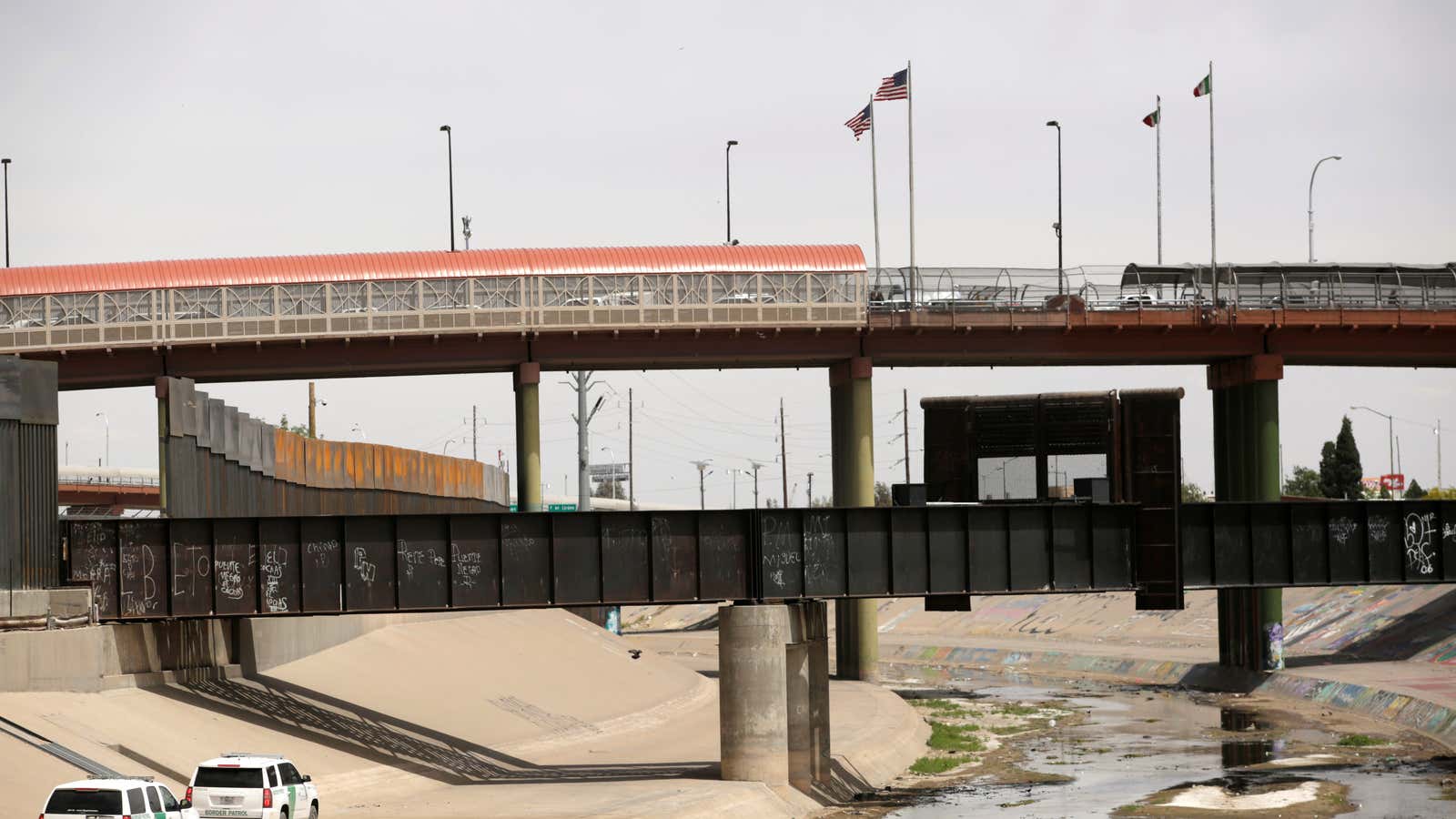For much of their history as independent countries, the United States and Mexico have been at odds, if not at war.
There was the 1846 US invasion, during which Mexico lost half of its territory. There were other US incursions too. These days the issues are different but still divisive. There are the millions of Mexicans who moved to the US illegally to work. There are the drugs going north, the guns flowing south, and the fights over shared water supplies.
There are enough thorny issues to ruin several friendships. But over the past few decades—particularly since the 1994 rollout of the North American Free Trade Agreement, of which both are parties—the two countries have learned how to work through them by tackling each separately.
US president Donald Trump could now derail that progress with his threat to impose a 5% tariff if Mexican authorities don’t intercept Central Americans from crossing the US-Mexico border. “President Trump has just reversed 20+ years of diplomatic practice by linking trade and immigration,” said Arturo Sarukhan, former Mexican ambassador to the United States, during a panel organized by the Council of the Americas on Wednesday.
On Thursday, Mexican and US officials will continue talks to avert the tariffs before the Trump-set deadline of June 10. Negotiators, who are meeting in Washington, failed to reach a deal the previous day.
The problem of using one contentious issue as leverage to solve another unrelated one is that the potential for disagreement multiplies. So, diplomats from both countries have made limiting tough negotiations to a single arena a key tenet in managing US-Mexico ties, Sarukhan said.
“Both countries very quickly understood that the worst thing you can do with a relationship as complex and with as many moving parts as the one that we have between Mexico and the US was linkage of policy issues,” he added. “If you link them, you contaminate the agenda as a whole and it grinds to a halt.”
The odds of negotiators in Washington avoiding that fate are not great, especially amid real-time commentary from the presidential Twitter feed.
If they fail and Trump imposes tariffs, the fallout will spill beyond the two issues at hand. Mexican lawmakers might feel less inclined to sign the United States-Mexico-Canada Agreement, which Trump wants to replace NAFTA. Government officials in that country might also start feeling less cooperative on other fronts—to the detriment of the US economy and national security.
NAFTA, and the improved diplomatic relations that came with it, have spurred information sharing between law enforcement officials on both sides, business partnerships, and cross-border supply chains. They have helped both Mexico and the United States better navigate globalization.
If the two countries are distracted with fights, they won’t be able to reap those advantages in the future, said Earl Anthony Wayne, former US ambassador to Mexico, who spoke at the same event. More practically, the two countries need to get along for geographic reasons.
“We are condemned to be neighbors and we are blessed to be neighbors,” he said.
